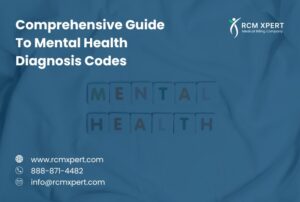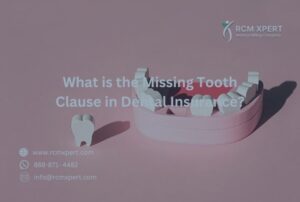Denial codes are like unwelcome puzzles that healthcare providers and medical billing experts must solve. They represent reasons why a Medicare or insurance claim was not approved, directly impacting revenue and operations for healthcare providers.
They are particularly common ones like the CO24 denial code, which can be frustrating, but understanding them is crucial to rectifying and preventing future claim rejections.
Denial codes in medical billing are not just random sequences; they are specific indicators of what went wrong with a claim. Each code tells a story, whether it’s about a missing piece of information, a procedure not covered by the patient’s plan, or a discrepancy in the service provided.
For healthcare providers and medical companies, comprehending these codes is the first step in challenging denied claims and optimizing billing processes.
This blog will help you understand the basics of denial codes, the best ways to resolve them, and Medicare denial codes.
Description of denials codes
CO 24 denial code:
The CO 24 denial code is something you might encounter frequently. It essentially means that the charges for the services provided are covered under a capitation agreement. Now, what is a capitation agreement?
Imagine it as a fixed pre-payment arrangement for each patient enrolled, regardless of the number or nature of services provided. This code pops up when the care provided is already included in this fixed payment rate, so separate billing isn’t necessary or allowed.
It’s like having an all-you-can-eat pass at a restaurant; you don’t pay for individual dishes. If you see this code, double-check your patient’s coverage details and the services agreement to avoid redundant billing.
CO22 denial code:
Encountering a denial code CO22 can be a bit puzzling. This code is often referred to as a COB denial code, which stands for “Coordination of Benefits.” The coordination of benefits denial code is commonly used when there’s a mix-up or confusion about which insurance plan should pay first.
Think of it like going out to dinner with friends. When the bill comes, there’s a moment where everyone is figuring out who pays what.
The CO 22 code is similar. It’s the insurance companies trying to determine who should pick up the tab first. This code can also help if the service is provided by an out-of-network provider.
It’s like if your phone plan has specific network coverage, and you step outside that network there might be additional costs or different rules. The denial code for out-of-network services is a reminder to check if the provider is within the network covered by the insurance.
CO 204 denial code:
this code signifies that the payment for the service provided has been adjusted because the submitted claim contains an inconsistency or error. It’s like when you receive a receipt after shopping and notice that an item was charged incorrectly.
In medical billing, this code is a nudge to review the claim and identify where the mistake might have occurred. Correcting these errors is crucial for ensuring that healthcare providers are reimbursed accurately for their services.
CO 226 denial code:
Now, let’s talk about the CO 226 denial code. This one is a bit different. It’s primarily related to capitation agreements, which, in simple terms, are like a fixed-fee arrangement between insurance providers and healthcare providers.
Think of it as a flat-rate phone plan, where you pay a set amount regardless of usage. The CO 226 code pops up when a claim is submitted for a service that’s already covered under a capitation agreement. It’s like paying extra for a service that’s already included in your monthly subscription fee.
Understanding the nuances of capitation agreements can help avoid these kinds of denials, ensuring smoother financial operations for healthcare practices.”
CO 242 denial code:
The CO 242 denial code is typically associated with issues related to capitation agreements in healthcare billing. This code indicates that the services rendered were provided under a capitation agreement and therefore, are not separately reimbursable.
It’s like having a monthly subscription for a set of services, and anything outside that list might not be covered. Additionally, this code may pop up in situations involving coordination of benefits or out-of-network service claims.
If you see this on a bill, it means you need to check the patient’s plan details and possibly coordinate with other insurers.
CO10 denial code:
The CO10 denial code is straightforward but crucial. It flags when a claim is rejected because the healthcare provider is not within the patient’s network. Think of it as trying to use a gym membership at a gym that’s not part of your network.
it simply won’t work. This often occurs when a patient receives services from a provider or facility outside their insurance plan’s approved network. It’s essential to verify a provider’s network status before scheduling services to avoid this type of denial.
CO 1 denial code:
The CO 1 denial code is all about the basics – it signals that the expenses incurred were not covered under the patient’s current health plan. This is akin to having a phone plan that doesn’t cover international calls and then making a bunch of them.
When you see CO 1, it’s a clear sign to review the patient’s benefits plan to understand the coverage limits and restrictions.
It’s a common code, but addressing it promptly ensures clarity in what the patient’s insurance plan covers.
CO-4 denial code:
The CO-4 denial code is a common issue faced by healthcare providers. It essentially means that the service provided was not covered because the provider was out-of-network.
As a healthcare provider, is not part of the patient’s health plan network, the insurance company may not cover the cost of the service you provided.
This can be frustrating, but it’s crucial to check the patient’s network coverage before delivering services to avoid such denials.
CO9 denial code
Encountering a CO9 denial code can be puzzling. This code indicates that the claim lacks necessary documentation or has incomplete information. Think of it as a puzzle with missing pieces – the insurance company needs a complete picture to process the claim.
For healthcare providers and medical billers, this means ensuring that all required documents and detailed information are attached to the claim before submission.
It’s like double-checking your work to make sure you’ve provided everything needed for a smooth process.
Reasons For Denial codes:
CO 24 Denial Code:
Non-Medical Necessity: The service provided is deemed not medically necessary, based on the patient’s current health condition. For instance, a routine physical
Check-ups may not be covered for a patient without any symptoms or risk factors.
Service Excluded in Policy: The service falls outside the coverage scope of the patient’s insurance plan. An example could be cosmetic procedures, which are typically not covered unless medically necessary.
Lack of Pre-Authorization: The procedure or service required prior authorization from the insurance provider, which was not obtained. This often happens in the case of specialized or expensive treatments.
CO 4 Denial Code:
Modifier Mismatch: The modifier used does not align with the primary procedure code, indicating a potential error in coding. For instance, using a post-operative modifier for a service that isn’t post-surgical.
Inaccurate Coding: The procedure code and modifier combination do not accurately represent the service provided. Accurate coding is crucial for clarity and proper billing.
Outdated or Invalid Codes: The use of outdated or no longer valid codes can lead to denials, underscoring the importance of staying current with coding standards.
CO 9 Denial Code:
Policy Expiration: The patient’s insurance coverage expired before the date of service. Regular verification of insurance validity is essential to avoid this issue.
Termination of Group Coverage: The patient lost coverage due to changes in employment or group insurance status. This often occurs with job transitions or organizational policy changes.
Policyholder Changes: Changes in the policyholder’s status, like divorce or death, can affect dependents’ coverage, leading to denials if not updated promptly.
CO 1 Denial Code:
Unmet Deductible: The patient has not yet met their annual deductible, and the service cost falls under this deductible amount. Understanding patients’ deductible balances can help anticipate this issue.
Incorrect Deductible Application: Misapplication of the deductible amount to the service, possibly due to clerical errors. Accuracy in applying deductibles to patient accounts is crucial.
Mismatch in Deductible Details: Discrepancies between the billed service and the deductible terms in the patient’s policy. This highlights the need for thorough verification of policy details.
CO 10 Denial Code:
Non-covered Services: This denial often occurs when the services provided are not covered under the patient’s current health plan. For example, some plans may not cover certain types of therapies or elective procedures.
Plan Exclusions: Specific treatments or procedures might be excluded from coverage. For instance, cosmetic surgeries often fall under this category.
Benefit Limits Reached: Sometimes, this code appears if the patient has already reached their benefit cap for a particular service, like exceeding the number of allowed physiotherapy sessions.
CO 22 Denial Code:
Coverage Terminated: This code can indicate that the patient’s insurance coverage was not active at the time of service. It’s like a gym membership . if it’s not active, services can’t be utilized.
Incorrect Plan Details: Often, this arises from administrative errors, like incorrect member ID or plan codes being used.
Policy Changes: Sometimes, insurance policies undergo changes that patients might not be aware of, leading to denial of claims for previously covered services.
CO 242 Denial Code:
Services Bundled: This means the billed service is included in another service or procedure already billed. Think of it as buying a set meal where a drink is included – you can’t charge separately for the drink.
Incorrect Billing of Services: It could be due to billing separate codes for procedures that should be combined under one code.
Redundant Services: This happens if services are deemed repetitive or unnecessary, akin to taking two identical photos of the same scene.
CO 226 Denial Code:
Insufficient Documentation: Incomplete or missing documentation can lead to this denial. It’s like trying to bake a cake without a recipe.
Unclear Medical Necessity: If it’s not clear why a specific treatment was necessary, insurers might refuse to pay.
Incorrect Coding: Coding errors, like using the wrong diagnosis or procedure codes, can easily trigger this denial.
CO 204 Denial Code:
Advanced Beneficiary Notice (ABN) Not Issued: When services are potentially non-covered, providers should issue an ABN to patients, which wasn’t done in this case.
Non-Medical Necessity: This is issued when the treatment or test doesn’t align with typical medical practices for a patient’s condition.
Experimental Treatments: If a treatment is considered experimental or unproven, insurance companies might not cover it.
Medicare denial codes
CO 24 Denial Code:
The CO-24 denial code is a common issue faced by healthcare providers. It indicates that the charges are covered under a capitation agreement or managed care plan.
This means the service is already included in a monthly fee your patient’s insurance plan pays to the healthcare provider.
To address this, verify the patient’s insurance benefits and confirm if the service falls under their capitation agreement.
CO 4 Denial Code:
When you encounter the CO 4 denial code, it signifies that the procedure code is inconsistent with the modifier used or a required modifier is missing. This often happens due to a mismatch in billing.
Healthcare providers should double-check the procedure codes and modifiers submitted to insurance companies to ensure they align correctly. A precise review of the coding can often rectify this denial.
CO 9 Denial Code:
The CO 9 denial code is issued when the claim lacks a date of service. This is crucial for insurance companies to process claims. Healthcare providers need to ensure that every claim submitted includes the specific date when the service was provided.
A quick fix is to review the claim form for accuracy and completeness, particularly focusing on the date of service entry.
CO 1 Denial Code
Encountering a CO 1 denial code means there’s a lack of necessary documentation. This denial is common when insurance companies need more information to verify the necessity of the service provided.
Healthcare providers should respond by submitting detailed documentation that supports the service’s medical necessity, ensuring clear communication with the insurance plan.
CO 10 Denial Code:
The CO 10 denial code signifies that the claimed service is not deemed a ‘medical necessity’ by the payer. This is a tricky area, as what constitutes medical necessity can vary between insurance plans.
Healthcare providers should familiarize themselves with the specific medical necessity criteria of the insurance companies they work with and ensure that their billing aligns with these criteria.
CO22 Denial Code:
The CO22 denial code is commonly issued when there is an overlap in coverage. This means that the healthcare provider’s billing team needs to verify which insurance plan is primarily responsible for the payment.
It’s crucial to ensure that patient records are up-to-date to avoid conflicts between insurance companies. In simple terms, this code signals a need to clarify which insurer should pay first.
CO242 Denial Code:
When a healthcare provider encounters the CO242 denial code, it typically indicates that the services billed are covered under a capitation agreement. This means the provider is already compensated through a pre-arranged payment plan with the insurance company, and no additional billing is necessary.
Understanding your contract with the insurance plan is key to managing these denials effectively.
CO226 Denial Code:
The CO226 denial code is seen when there’s missing or incomplete information about the patient’s insurance. For healthcare providers, this is a prompt to double-check patient details and resubmit the claim with complete insurance information.
It’s a common issue, easily rectified by ensuring all patient data is accurately recorded.
CO204 Denial Code:
This code appears when the service is not covered by the patient’s current insurance plan. Healthcare providers need to verify insurance coverage before providing services.
Sometimes, this might involve discussing alternative payment options with the patient if certain services are not covered by their insurance plan.
Solutions for denial codes
CO 24 Denial Code:
Verify Insurance Information: Double-check the patient’s insurance details. Ensure that the claim matches the information on file, as CO 24 often indicates an issue with coverage for the service billed.
Review Service Coverage: Confirm with the insurance plans if the billed service is covered. Sometimes, CO 24 is triggered if the service is not included in the patient’s plan.
Check for Prior Authorization: Some services require pre-approval. Ensure that such procedures under Medicare or Medicaid coverage have proper authorization to avoid this denial.
CO 4 Denial Code:
Insurance Procedure Mismatch: Ensure the service code billed matches what the healthcare provider performed. CO 4 is often due to a procedural coding error.
Update Patient’s Policy Information: Regularly update insurance information. CO 4 can occur if the patient’s policy has lapsed or changed.
Clarify with Insurer: Direct communication with the insurance company can resolve ambiguities. They can provide specific reasons for the CO4 denial.
CO9 Denial Code:
Confirm Patient Identity: Incorrect patient information can trigger CO9. Verify the patient’s name, date of birth, and other identifiers with the insurance records.
Check Insurance Validity Dates: Ensure that the insurance was active on the date of service. CO9 may imply service rendered outside coverage dates.
Reconcile Service Codes: Review the billing codes used. Sometimes, CO9 arises from mismatched or outdated codes.
CO1 Denial Code:
Deductible Not Met: Check if the patient’s deductible has been met. CO1 often indicates billing for services before the deductible is fulfilled.
Educate Patients: Inform patients about how their Medicare or Medicaid coverage works, especially regarding deductibles.
Reevaluate Billing Statement: Recheck the billing statement for any errors or omissions that could lead to CO1.
CO 10 Denial Code:
Clarify Coverage Limits: Some services have limits under insurance plans. Ensure the service billed is within these limits to avoid CO 10.
Patient Eligibility Verification: Regularly verify the patient’s eligibility for the billed services, particularly for chronic care or recurring treatments.
Document Medical Necessity: For Medicare or Medicaid, document why the service was medically necessary. Lack of this can result in CO 10 denials.
CO22 Denial Code:
Update Coverage Information: CO22 often results from outdated insurance information. Ensure the patient’s current insurance details are accurately recorded.
Review Billing Codes: Incorrect or outdated billing codes can trigger CO22. Regular code reviews and updates are crucial.
Direct Insurer Inquiry: Contact the insurance provider for specific reasons behind the CO22 denial to rectify issues effectively.
CO242 Denial Code:
Verify Service Authorization: CO242 can occur if services were rendered without proper authorization. Always check authorization requirements.
Align with Insurance Guidelines: Ensure that the services provided align with the specific guidelines of the insurance plans.
Reassess Claim Submission: Review the claim for any errors or missing information that could lead to a CO242 denial.
CO226 Denial Code:
Check Service Frequency: CO226 may indicate services were provided more frequently than allowed. Verify frequency limits with the insurance.
Document Continuity of Care: For ongoing treatments, maintain thorough documentation to justify the continuity of care under healthcare provider guidelines.
Insurance Plan Consultation: Discuss with the insurance company any unclear aspects about the frequency or duration of services to prevent CO226 denials.
CO204 Denial Code:
Validate Coding Accuracy: Ensure that the billing codes accurately reflect the services provided. CO204 often relates to coding errors.
Understand Plan Specifications: Familiarize with the specific provisions of each insurance plan, as CO204 can be specific to plan rules.
Engage in Regular Training: Regular training for medical billers on the latest billing practices and insurance policies can minimize CO204 occurrences.
Final thoughts:
In the complex world of healthcare practice’s financial management, understanding and resolving Denial Codes is paramount. Regular insurance verification is a key step in this process. By demystifying these codes, healthcare providers can enhance their billing efficiency, reduce errors, and ensure smoother operational flow.
Keeping abreast of changes in Medicare and insurance policies further strengthens a practice’s ability to handle these challenges effectively. Ultimately, mastering denial codes leads to better financial health and patient satisfaction














